- Yes! in any/all of its loadouts!
- Yes! only in its original 1907 loadout!
- Yes! only in its WWI 1916 AA-equipped loadout!
- Yes! only in its WWII 1941 fully modernized loadout!
- No!
Originally posted December 30th, 2019, the original inaugural Swedish naval subforum suggestion
This is a suggestion for the HSwMS Fylgia, a Swedish Armored Cruiser from the mid-1900s, one of the world’s smallest; yet no less authentic; armored cruisers ever, and quite a looker of a ship back in its day, earning it the nickname of “White Swan of the Baltic” due to it being painted a solid white with spar yellow funnels, AKA the same beloved color palette of the American Great White Fleet.
1908 Jacob Hägg painting of Fylgia on her maiden voyage
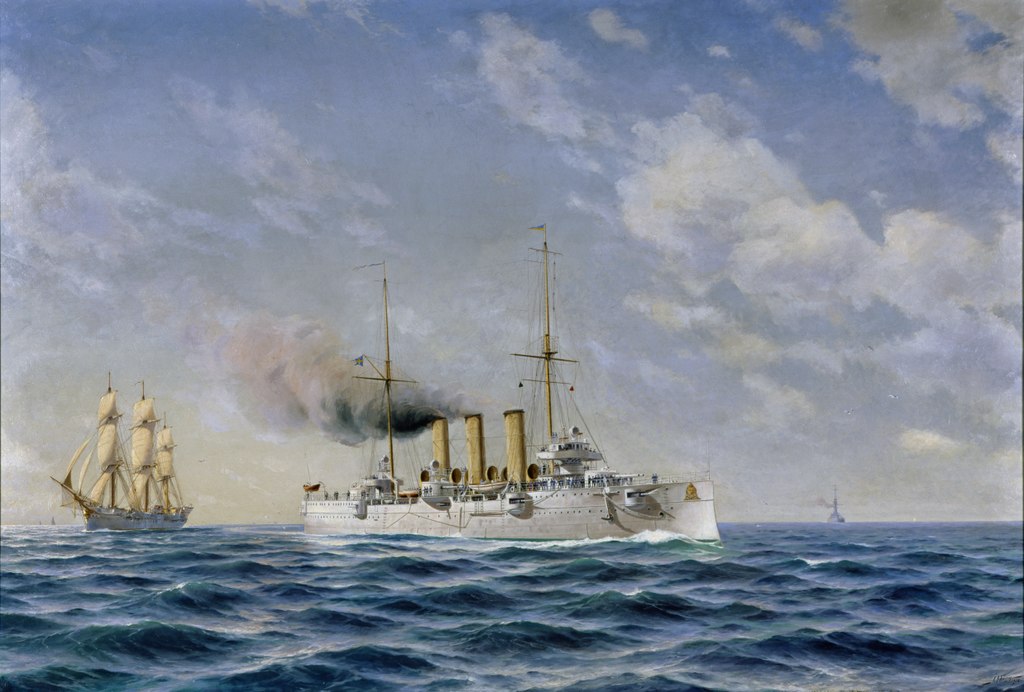
side profile of 1:100 scale model of the original incarnation of Fylgia, from the Sjöhistoriska museet
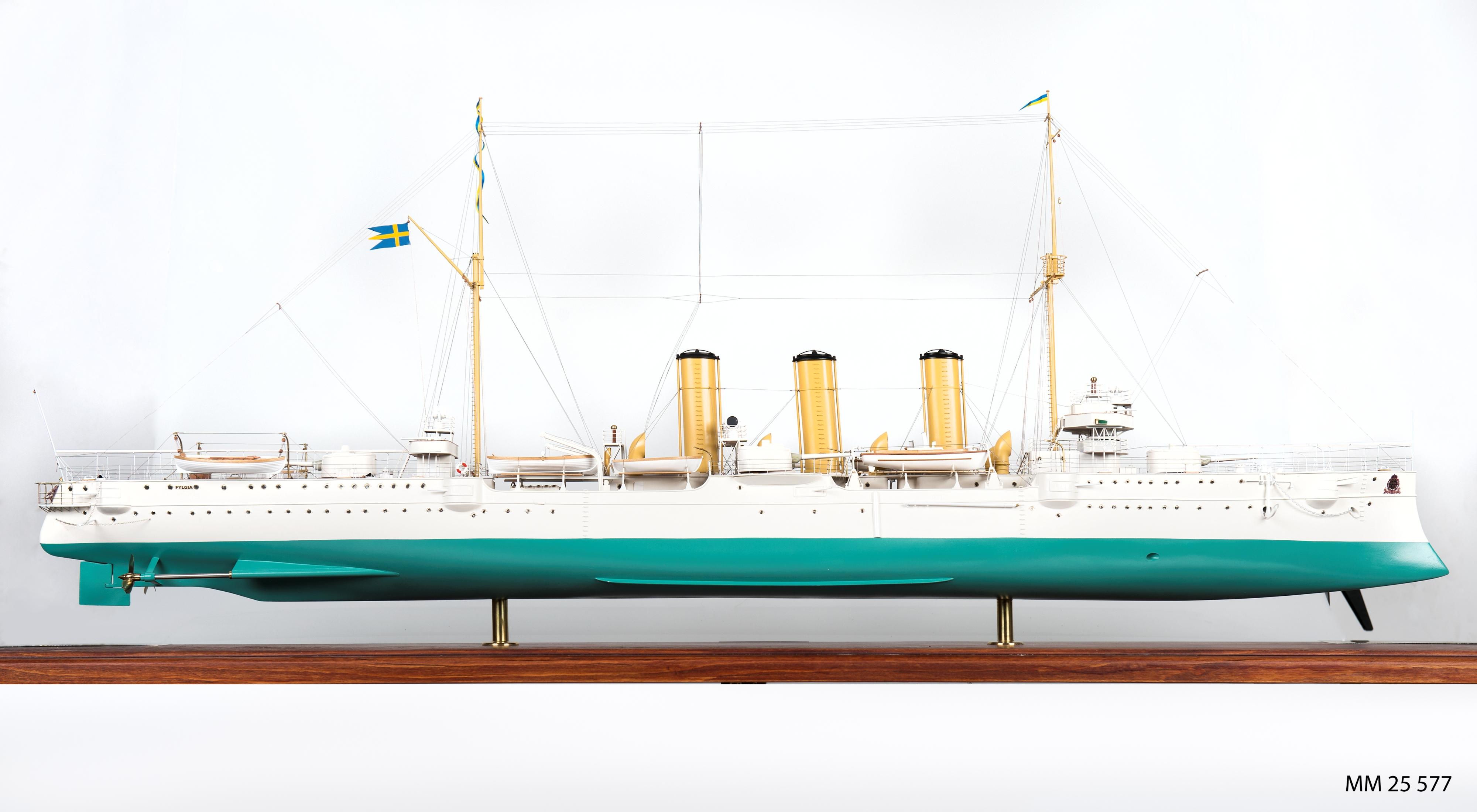
Fylgia in either 1921 or 1922, on a voyage to South America… and yes, those are sails. Fylgia was flying her 4 latine sails to save fuel.
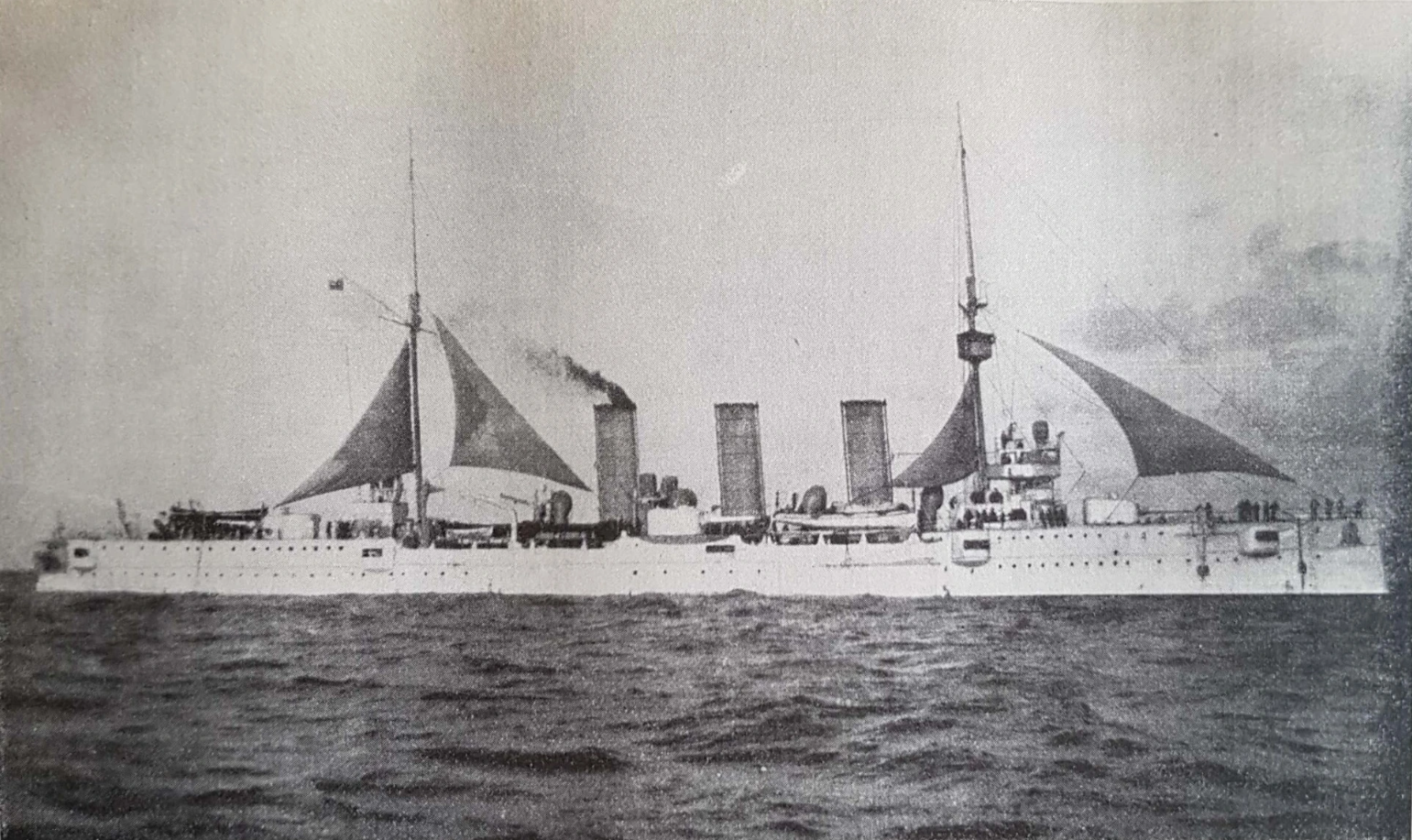
Fylgia, sometime after 1913 as seen by the plated over rear casemate
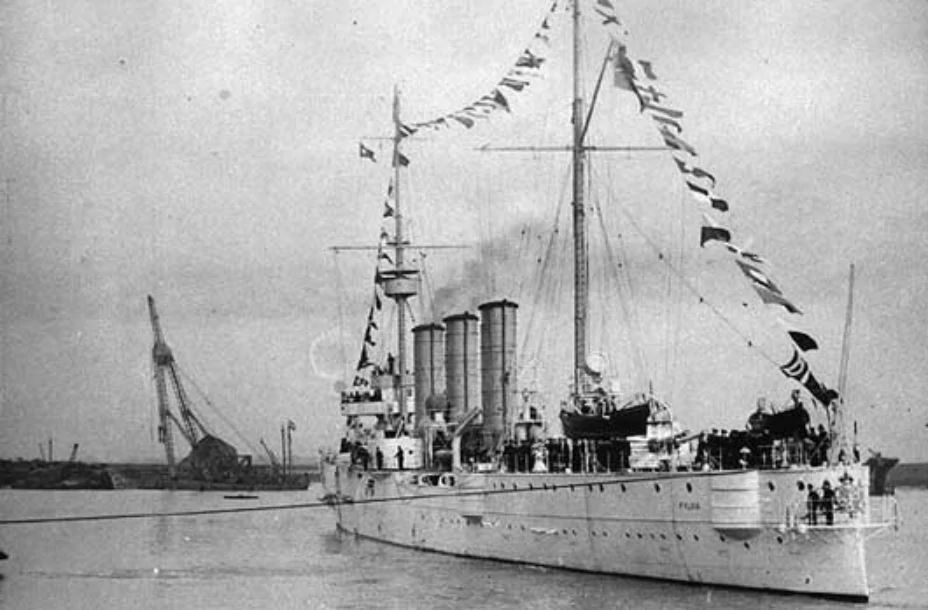
detail shot of the stern, unknown port, sometime post-1913
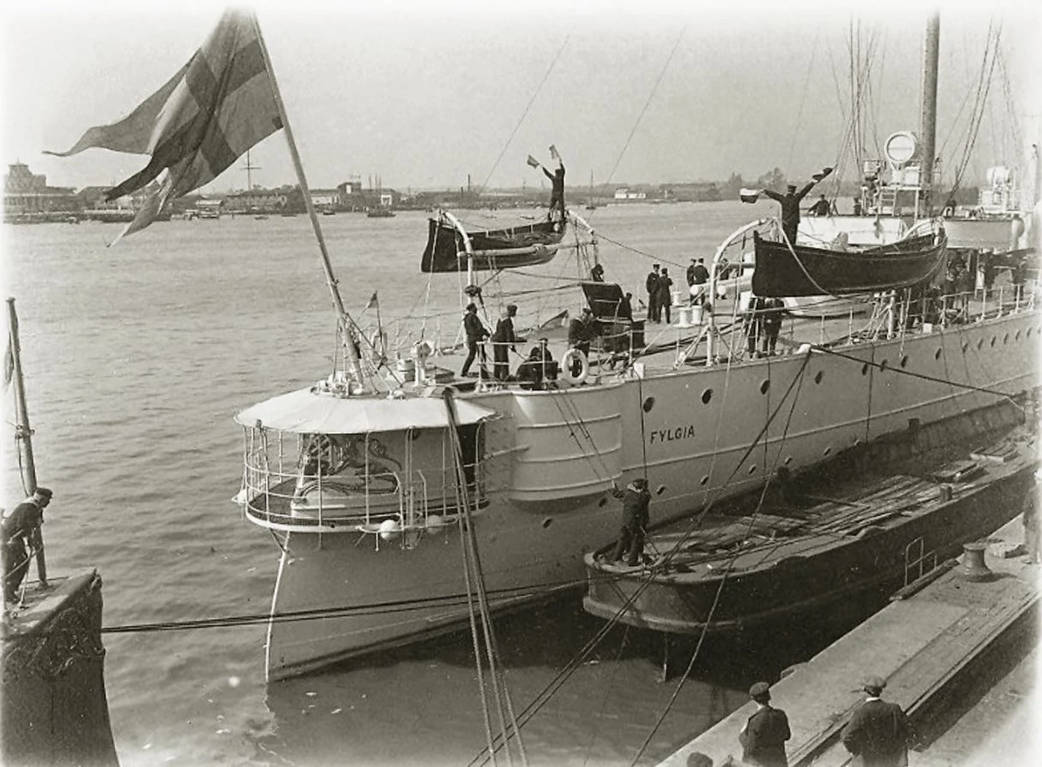
Fylgia in 1944, original color photograph… yeah the old girl was a little bit worn out after 4 years of neutrality patrols and praying the ****ing germans didn’t invade them like everyone else in the vicinity.
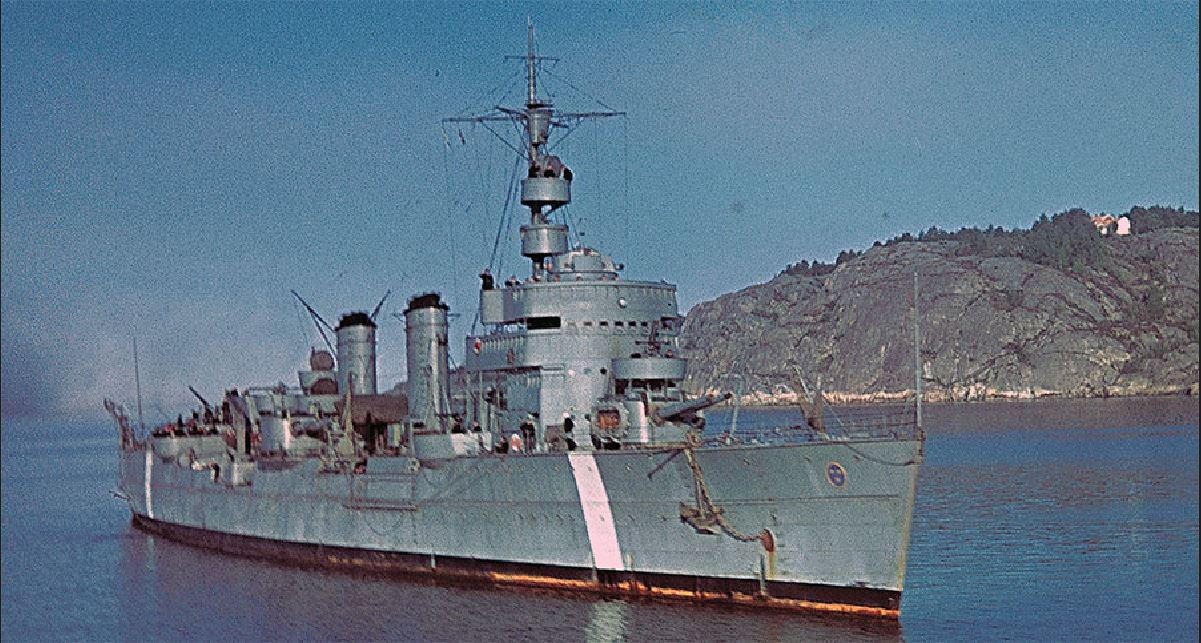
HISTORY:
In 1892 a committee had established that the navy of the then-United Kingdoms of Sweden and Norway needed two types of cruisers, one larger and one smaller. Due to low grant funding only five vessels of the smaller type would be built. In 1901, a new committee was appointed to investigate the fleet’s ship needs, and it was concluded that the smaller type was insufficient, and that larger vessels were required to solve the fleet’s tasks.
As is usual with a non-major but non-trivial naval force, the Swedes had a need of cruisers who could scout at sea independently and be able to take up combat with what was then the Torpedo Boat Destroyer and Protected Cruisers.
You see, prior to the 1950s, the Swedish Navy acted almost like a blue water navy, with not just having a fleet of coastal defense ships, but plenty of ships that could show the flag at foreign ports (if not many)- which the Fylgia especially was frequently doing up until the mid-30s. And in addition they could be used as training vessels- which the Fylgia certainly doubled as, with up to 50 of its 322 crew being cadets sometimes.
In 1902, funds were granted for the construction of a new armored cruiser, and the same year they placed the order with Bergsunds Mekaniska Verkstads AB, who submitted the construction work to Finnboda shipyards. The following year, funds were also sought for the construction of a sister ship to Fylgia, but this was rejected.
Fylgia was launched on December 20, 1905, becoming the largest Swedish vessel to date, 20 meters longer than her ever so slightly older sister in the Coastal Defense Ship/Armored Cruiser HSwMS Oscar II… while still being one of the world’s smallest armored cruisers.
Fylgia initially being launched at Finnboda Shipyards, 1905
On June 21, 1907, the Fylgia was delivered to the Navy. Almost immediately, in the same summer, the Fylgia embarked on an expedition to show the flag around the Caribbean and the United States. Ten of these long journeys were made until the outbreak of WWI 7 years later. So a globetrotter from the word go.
Between one of the later journeys, in 1913, some of the first modifications to Fylgia would be made:
the bow and aft casemate guns were removed to provide better space for the crew quarters. The aft casemates (seen in the launch above) were plated over. In the bow, the protruding casemates themselves were also plated over, and sometime at least a decade later would be outright entirely removed, giving a more modern look to the ship starting in the early interwar period.
Fylgia, unknown when and where, circa late 1920s-1930s
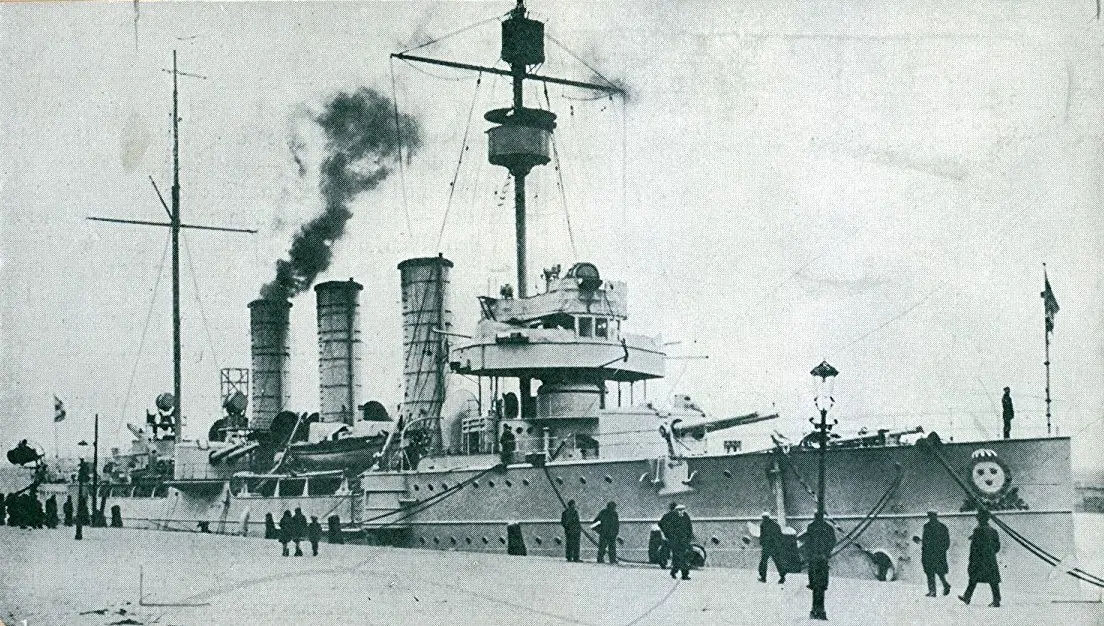
At the same time, the front mast was equipped with a fighting deck under the lookout basket.
After a shooting accident, the aft 57mm m/1889 guns were later moved down to the cab deck.
|
|
At the time of the outbreak of the First World War, Fylgia was on her way on a trip abroad to the Mediterranean, which she had to cancel due to the outbreak of the war.
During WWI, Fylgia was used as part of the Neutrality Guard. The most notable part of this time was Fylgia intercepting foreign warships that entered Swedish waters on several occasions, and in the autumn of 1915, Fylgia led the only Swedish wartime convoy carried out… at about the last point that such a thing could happen before the naval war really turned ugly for everyone.
|
|
In 1916, Fylgia had her first true refit- the rear 57mm m/1889 guns were replaced with m/1889B AAA modified guns on brand new HA/LA mounts.
|
in the immediate aftermath of WWI, and seeing that the legal protection of national maritime borders and a neutral nation’s waters was in all practicality kind of a strongly worded suggestion for wartime nations in a colossal super war; that should another one happen; the Swedish navy needed to reform in order to actually serve as a meaningful deterrent- a coastal fleet plan, a plan that really is what truly ended Swedish ambitions of ever having a true bluewater fleet.
this new naval doctrine would have the Sverige-class Coastal Defense Battleships (AKA post-pre-dreadnoughts) at the core of the navy backstopping a progressive series of layers of torpedo boats multiple kilometers out acting as mobile point defense for the Sverige-class ships, and at the farthest range of this line at about 10nm away, a fleet screen of Destroyers supported by the cruisers Fylgia and Clas Fleming.
…hopefully that’ll keep the Germans out of our territorial waters now!
very good photograph of Fylgia, as of 1921

|
|
In 1919, Fylgia embarked on its first post-war long voyage, once again to the Caribbean and the United States. A total of 20 foreign trips were made during the interwar period, before the ship was disarmed in 1933 and deployed in Karlskrona. The now 28-year old Fylgia was by now in poor condition and transferred to the reserve fleet. The coal-fired boilers were absolutely ancient, and both the combat and fire control equipment were nonfunctional and badly needed modernization.
|
|
After being postponed for many years, in the summer of 1939 (…wow, talk about timing) money was finally granted for a massive rebuilding and refit of Fylgia (see below).
Like many Swedish ships it wasn’t scrapped once it became outdated, but was upgraded through the decades. it’s not the size that counts, it’s how you refit it after 20 years.
|
|
while it’s called a refit, this is more like the British or Italian total internal or external rebuilding of their battleships than just a normal major refit.
The twelve coal-fired boilers were replaced with four larger, oil-fired Penhoët boilers, which reduced the number of funnels to two.
The frame rod was obsolete, which got the frame of the ship itself partially rebuilt.
The entire bridge and superstructure was replaced by a new, far more modern one.
The main artillery was modernized and received new ammunition, giving a maximum range of 16,000 meters, as well as modern fire control and centralized fire control direction.
All 57mm m/1889B guns were removed and replaced by a mixed air defense piece consisting of four 57mm m/98B-38B guns, two double gyro-stabilized 40mm automatic m/36 Bofors guns, a double 25mm automatic m/32 gun and a 20mm automatic gun, both designed by Bofors.
The two underwater 457mm underwater M/04 torpedo tubes were replaced with two pivoting 533mm (21-inch) tubes that stood on each side of the deck, and two depth charge throwers were also added.
in essence, the old 1900s armored cruiser was effectively modernized into a bulky, pint-sized interwar light cruiser, like a shorter Leander or a more conventional Omaha without the speed.
|
|
Once the rebuild was complete, Fylgia was assigned to the Göteborgseskadern (Gothenburg Squadron) where it would be during WWII, before resuming its favored role as a training ship.
in its post-war operations, Fylgia continued to be used for the fleet’s overseas trips and long journeys, with the 1948 feature film “Flottans kavaljerer” was recorded in conjunction with the 1948 long voyage.
so hey, we even got us a movie star!.. to end the ship’s career.
|
|
HSwMS Fylgia was decommissioned on January 30, 1953. Useful equipment was taken ashore, and the artillery was moved to the Kalix line in Norrbotten; the Kalix line being a defensive line in the event of Soviet invasion through Finnish territory; where they were placed near the village of Siknäs in 1960.
Siknas Battery, and the former guns of HSwMS Fylgia at the southern Kalix Line, Siknas, Norrbotten
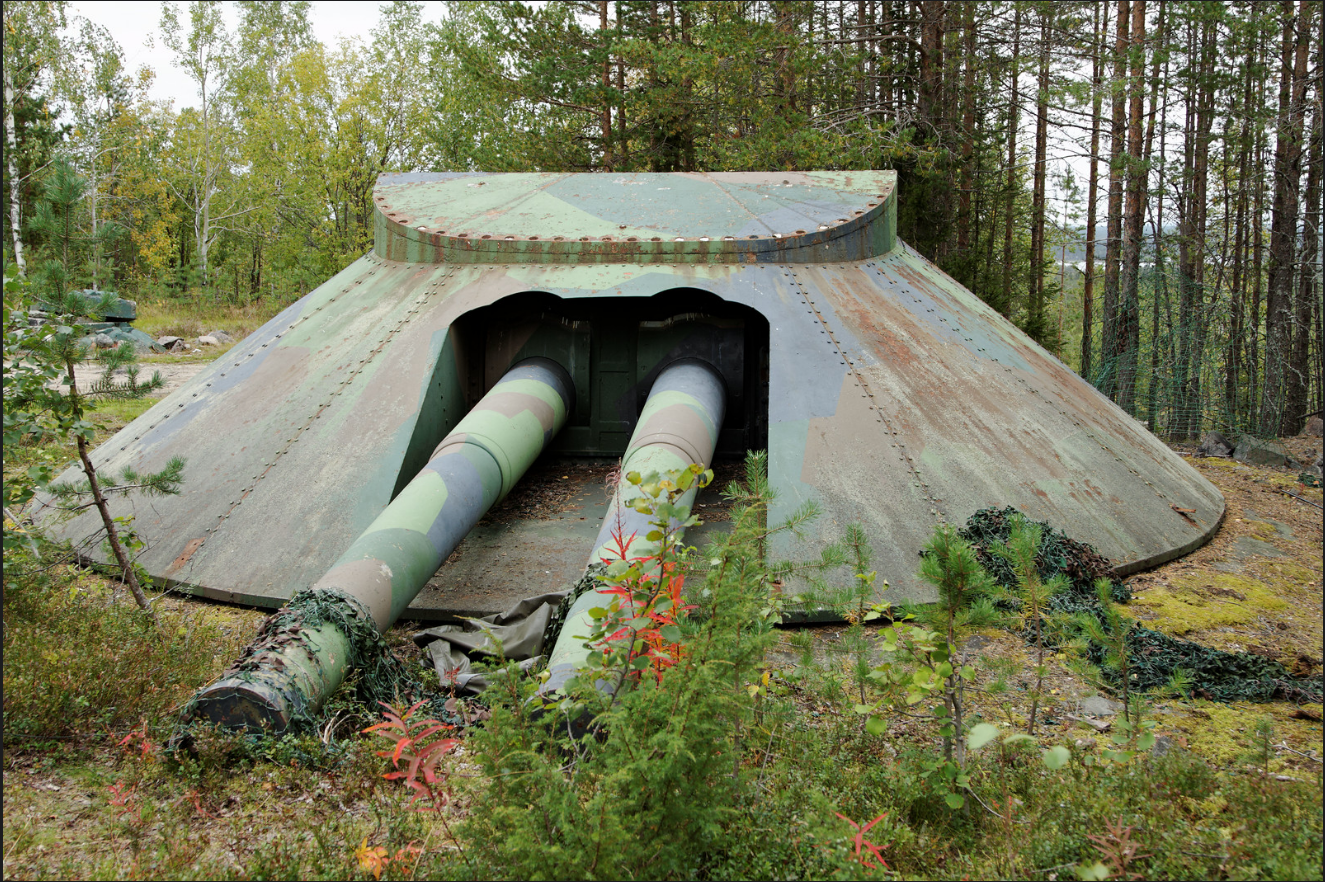
Today, most of the local Kalix Line equipment in the area are part of the museum of Siknäsfortet.
|
|
The hull was then repeatedly used as a target vessel for tests with artillery, early guided missiles, and other weapons- and although the intention was for the hull to be shot full of enough holes to sink, it just kind of never happened. Fylgia just wouldn’t die, even after eating guided missiles.
Fylgia being used as a target ship in 1957, note the damage on the bow where the bow cannons used to be.

Eventually the now very shot up ship was sold for scrap in 1957, at the cost of for 418,157 Krona to buyers in Göteborg before it was finally scrapped in Copenhagen.
GENERAL CHARACTERISTICS:
from 1907-1939:
Fylgia in either 1921 or 22, on a voyage to South America

Displacement:
4,310 metric tonnes standard
4,980 metric tonnes fully loaded
|
|
Length:
117 m (383 ft 10 in)
Beam:
14.8 m (48 ft 7 in)
Draft:
6.3 m (20 ft 8 in)
|
|
Machinery: 12 coal-fired Yarrow boilers feeding into 2 four-cylinder Vertical Triple Expansion engines, producing 12,000 shaft horsepower (8,900 kW), producing 22.77 knots (42 km/h), well over the estimated speeds of 21.5 knots.
|
Range:
8,000 nautical miles (15,000 km) cruising at 10 knots (19 km/h)
|
Complement:
322
|
|
changes from 1940:
Displacement:
4,240 metric tonnes standard
4,980 metric tonnes fully loaded
|
ship dimensions were unchanged
|
Machinery: the original and now grossly outdated coal-fired boilers were replaced with 4 Penhoët boilers to feed the 2 refurbished four-cylinder Steam VTE engines, producing 13,000 shp, now going up through 2 shortened funnels (the 3rd was removed), and back through the 2 shafts to produce 23.5 knot speeds
|
|
Fuel:
500 tons of fuel oil
|
Range:
5770 nmi at 10 knots (being Swedish, the substantial cut in max range was no real loss)
|
Complement:
322
ARMOR:
the ship hull itself:
22-35mm of riveted steel depending on the area
considering the deck armor, it’s certain that the stern and bow sections beyond the slab-sided citadel are 35mm thick; curving into the stern and ram bow, while the 22mm is the hull acting as backing for the midsection of the ship behind the belt.
|
|
Armored Decks and turtleback:
22 to 35mm depending on the area (mirroring the hull of the ship)
the Main Deck has 22mm of thickness on the flat part of the turtleback behind the belt.
The Main Deck outside of the citadel area has 35mm of thickness, curving and narrowing into a ram bow, and going aft curving into a turtleback.
|
|
Armored Belt:
100mm across about half the length of the hull, protecting the machinery spaces down to the waterline.
Turrets:
125mm on the turret face
50mm on the sides.
Ammunition hoists:
100mm
Conning tower:
100mm all around
ARMAMENT:
Original (1907):
the original armament loadout for Fylgia was actually quite good for the time- if hindered by its average caliber; but the one fore, one aft, one on each wing design was actually extremely progressive in being all in turrets AND with a 6-gun broadside when such layouts wouldn’t fully proliferate until WWI was over.
8 × 152mm/50 Bofors M/03 15,2 cm kanon M/03 – Wikipedia in 4x2 twin turrets. one on the bow, one in the stern, and one on each side midships
14 × 57mm/48 QF cannons M/89 57 mm kanon M/89 – Wikipedia, placed in five casemates on each side of the hull and in two towers on each concave and aft bridge
2 × 37mm/39 cannons M/98B http://www.navypedia.org/arms/sweden/sw_guns.htm - there’s no specific page but navypedia list this and many other swedish naval gun stats
2 × 457 mm underwater M/04 torpedo tubes
Mine rails (max 100 mines)
|
|
WWI refit (1916):
there were a series of small refits
8 × 152mm/50 Bofors M/03
10×1 57mm/48 QF cannons M/89 - 6 in casemates, 4 on the weather deck or fighting tops
2×1 57 mm/55 AA cannons M/89B
4 of the original M/89s were removed by the time of the WWI refit, and 2 AA-optimized M/89B versions took the place of the two m/89B deck guns in this refit,
2×1 37 mm/39 cannons M/98B
2×1 457 mm underwater M/04 torpedo tubes
|
|
WWII refit (1941):
alongside the rebuild of the ship, The air defense was completely revamped for the modern age
4×2 152 mm/50 Bofors M/03
|
|
4×1 57mm/55 AA cannons m/89B-38B
the old m/1889B AA guns were replaced with a modernized version in the 89B-38B
|
|
2×2 40mm/60 Bofors AA m/36 - AKA the early Swedish version of the 40mm Bofors gun.
|
|
1×2 25mm/58 Bofors AA m/32
A twin M/32 mount aboard HSwMS Gävle
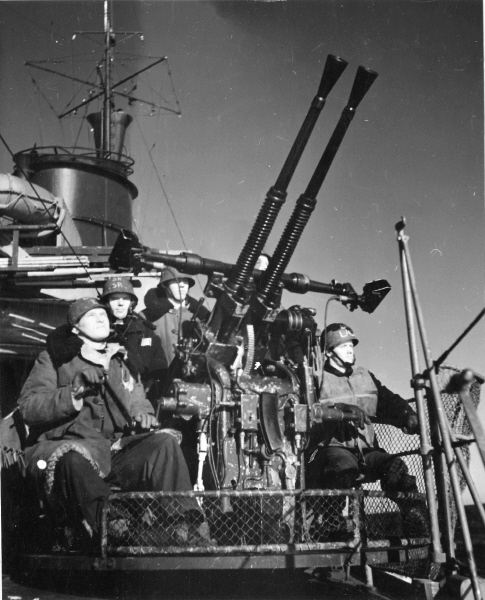
the 25mm m/32 was developed alongside the 40mm design that became the m/36 as a smaller and lighter alternative for areas where the 40mm was too heavy or unwieldy or lacking in volume that a single or twin mount 25mm could- much like other 25-30mm cannons.
although little-known outside Sweden, the 25mm m/32 is actually a surprisingly influential design- being reverse engineered and developed upon by the Soviets as the 25mm 72-K and the 37mm 61-K.
|
|
1×1 20mm/66 akan m/40
as it turns out, this is ingame directly under both its army names, on the Pansarbil m/40 premium tier 1 tank as the pvlvkan m/40, and as (in a slightly modified form) the lvakan m/40B on the Pvlvv fm/42.
|
|
2x1 533mm torpedo tubes, replacing the old 18-inch torpedoes, and being placed on a pivoting deck mount per side.
2 depth charge launch rails were also added… probably more for letting any Russian submarines know that they were found.
SOURCES:
Online:
https://www.navypedia.org/ships/sweden/sw_cr_fylgia.htm
Literary:
-
Borgenstam, Curt; Insulander, Per; Åhlund, Bertil (1993). Kryssare: med Svenska flottans kryssare under 75 år (in Swedish). Västra Frölunda: Marinlitteratur. ISBN 91-970700-6-8. LIBRIS 7792229.
-
Hofsten, Gustaf von; Waernberg, Jan; Ohlsson, Curt S. (2003). Örlogsfartyg: svenska maskindrivna fartyg under tretungad flagg. [Forum navales skriftserie, 1650-1837 ; 6] (in Swedish). Stockholm: Svenskt militärhistoriskt bibl. i samarbete med Marinlitteratur. ISBN 91-974384-3-X. LIBRIS 8873330
-
Lagvall, Bertil (1991), Flottans Neutralitetsvakt 1939-1945, Karlskrona: Marinlitteraturföreningen nr 71, ISBN 91-85944-04-1
.jpg)
